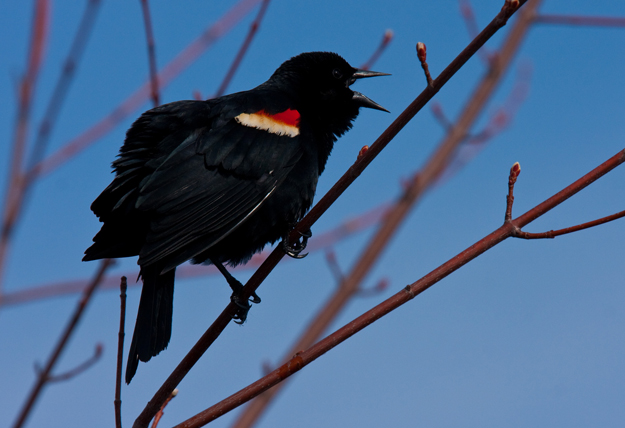Many animals have particular patterns and colors that help them avoid predators. Some blend into the background or mimic an object like a leaf or twig, and some try to direct a predator’s attention to a less vulnerable body part. Test your visual skills with these tricky creatures.
American Woodcock
There’s a bird in this picture—can you see it? The American woodcock spends much of its time on the ground, where it’s well-camouflaged against leaf litter. Related to sandpipers, it uses a long beak to probe the ground for earthworms. Spot this secretive bird on an upcoming woodcock watch program.
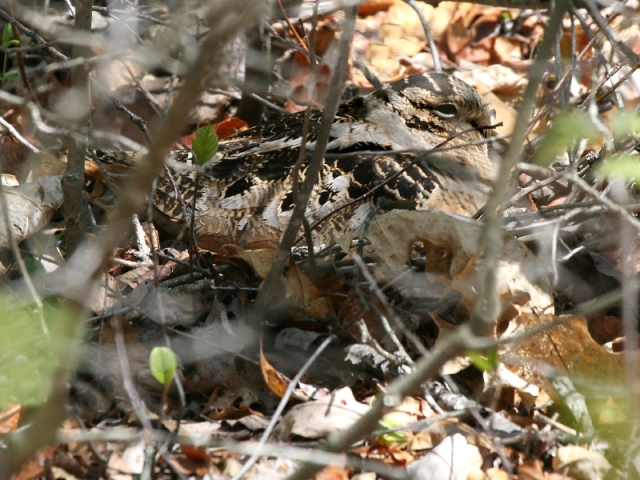
Gray Hairstreak
Heads or tails? The gray hairstreak has a false “head” on its hind wings that confuses predators. In this photo, the false head (complete with false antennae) is at the top. In a study on a related butterfly, the red-banded hairstreak, scientists found that jumping spiders were more likely to attack the fake head than the real one, enabling the butterfly to escape with its vital organs unscathed.

Treetop Bush Katydid
Can you see this insect? A nymph (or young) katydid is sitting on the largest milkweed leaf to the left. Many katydids mimic leaves, and though you’ll hear their loud calls during the warm months, they remain well hidden. Katydids look a bit like grasshoppers, but they’re more closely related to crickets.
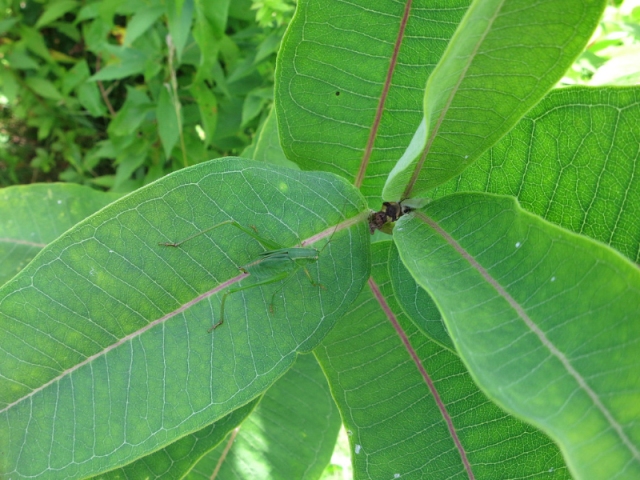
Wood Frog
This frog spends much of its time on the forest floor, where it blends in with leaf litter. In the spring it lays eggs in temporary (or “vernal”) pools, calling for mates with a characteristic quacking sound. Having trouble spotting this frog? It’s near the bottom of the picture, a little left of center. Discover wood frogs and vernal pools in an upcoming program.
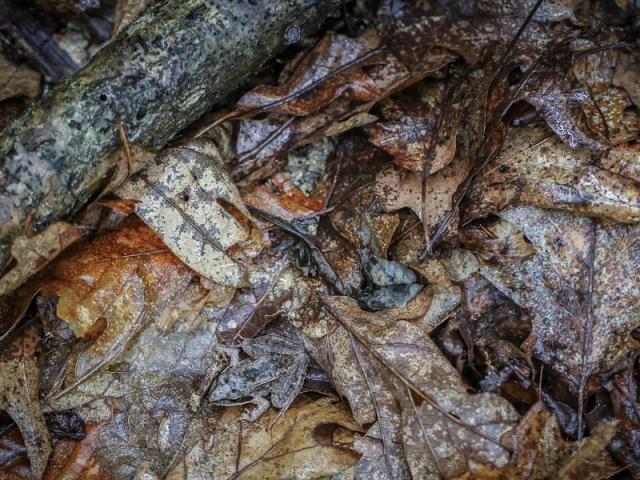
Eastern Screech-Owl
This small owl rests in tree cavities during the day. Its feathers blend in with the surrounding bark. Eastern screech-owls also nest in cavities, but they can’t carve into trees themselves, so they rely on woodpeckers and other cavity-creators.
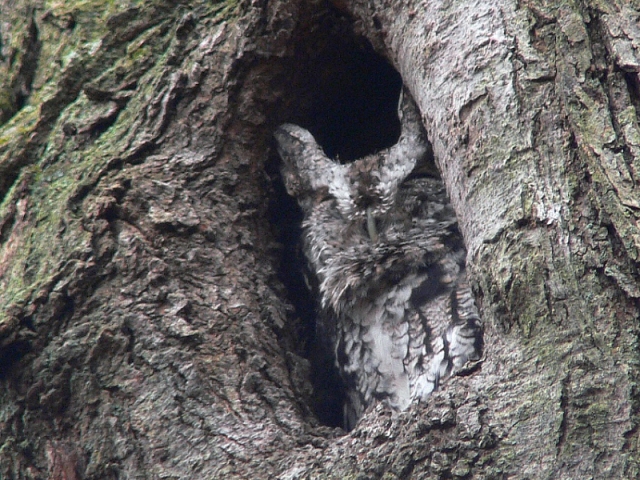
Learn more about identifying these creatures with field guides from the Audubon Shop, and help kids record their sightings with this Nature Log for Kids. Happy searching!
Photo credits: American woodcock copyright Thomas Zack, ZackStock Imaging; gray hairstreak and treetop bush katydid via Rosemary Mosco, Mass Audubon staff; wood frog via Dave Huth, davehuth.com; eastern screech-owl via Richard Johnson.


